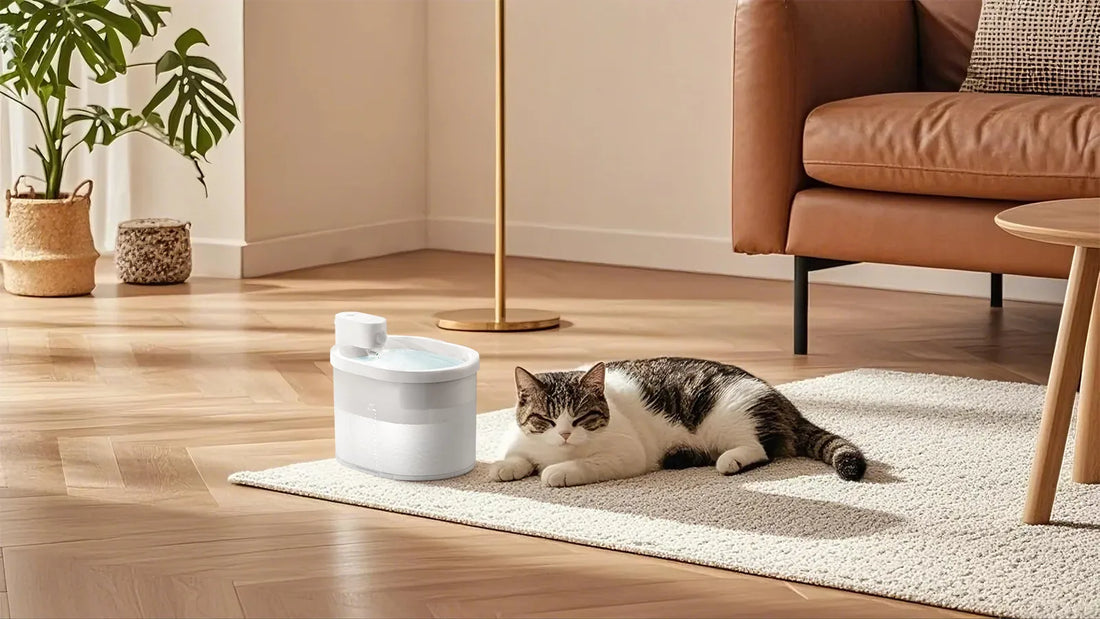Have you ever noticed foam forming in your cat's water fountain and wondered what could be causing it? Foamy water in a cat's fountain is a common issue that many pet owners face, but it can be concerning if you don't know the reasons behind it. In this article, we'll explore the various factors that contribute to foamy water and provide practical solutions to keep your cat's drinking water clean and safe.
Understanding the Causes of Foamy Water
Foam in your cat's water fountain can be caused by several factors, ranging from the type of water you use to the cleanliness of the fountain itself. Let's delve into the most common reasons:
1. Residue from Cleaning Products
One of the primary reasons for foamy water is the residue left behind by cleaning products. If you use soap or detergent to clean the fountain, even a small amount of residue can create foam when mixed with water. It's essential to rinse the fountain thoroughly after cleaning to remove any traces of cleaning agents.
2. Water Quality
The quality of the water you use in the fountain can also lead to foam formation. Hard water, which contains high levels of minerals like calcium and magnesium, can create foam when agitated. Additionally, water with high levels of organic matter or impurities can contribute to foaming.
3. Pet Saliva and Food Particles
Your cat's saliva and food particles can also cause foam to form in the water fountain. When your cat drinks from the fountain, saliva and small food particles can mix with the water, leading to foam. This is especially common if your cat eats wet food or has a habit of playing with the water.
4. Air Bubbles
Some water fountains are designed to create a gentle flow of water, which can introduce air bubbles into the water. While these bubbles are usually harmless, they can sometimes accumulate and form foam on the surface of the water.
5. Bacterial Growth
If the water fountain is not cleaned regularly, bacteria can grow and multiply, leading to foam formation. Bacterial growth can also cause the water to develop an unpleasant odor, making it less appealing to your cat.
How to Prevent Foamy Water in Your Cat's Fountain
Now that we've identified the common causes of foamy water, let's discuss how you can prevent it and ensure that your cat has access to clean, fresh water at all times.
1. Use Distilled or Filtered Water
Using distilled or filtered water in your cat's fountain can help reduce the chances of foam formation. These types of water have fewer impurities and minerals, which can minimize the risk of foaming. If you use tap water, consider installing a water filter to improve its quality.
2. Clean the Fountain Regularly
Regular cleaning is essential to prevent foam and maintain the overall hygiene of the water fountain. Make sure to clean the fountain at least once a week, and rinse it thoroughly to remove any cleaning product residue. You can use a mixture of vinegar and water for a natural cleaning solution that is safe for your cat.
3. Remove Food Particles and Saliva
To prevent food particles and saliva from contaminating the water, try to keep your cat's feeding area separate from the water fountain. If your cat tends to play with the water, consider using a fountain with a covered design to minimize contamination.
4. Check the Fountain's Design
If air bubbles are causing foam, you may want to consider switching to a fountain with a different design. Some fountains are designed to minimize air bubble formation, which can help reduce foam. Additionally, make sure the fountain is properly assembled and functioning as intended.
5. Monitor for Bacterial Growth
Regularly inspect the water fountain for signs of bacterial growth, such as a slimy film or unpleasant odor. If you notice any signs of bacteria, clean the fountain immediately and consider using a pet-safe water additive to inhibit bacterial growth.
Additional Tips for Maintaining Your Cat's Water Fountain
In addition to the steps mentioned above, here are some extra tips to help you maintain your cat's water fountain and prevent foam:
1. Replace the Water Frequently
Even if the water looks clean, it's a good idea to replace it daily to ensure freshness. Stagnant water can become a breeding ground for bacteria and other contaminants, which can lead to foam and other issues.
2. Use a Fountain with a Filter
Many water fountains come with built-in filters that help remove impurities and keep the water clean. Make sure to replace the filter regularly according to the manufacturer's instructions to maintain its effectiveness.
3. Keep the Fountain in a Cool, Shaded Area
Placing the water fountain in a cool, shaded area can help prevent the growth of bacteria and algae, which can contribute to foam. Avoid placing the fountain in direct sunlight or near heat sources.
4. Encourage Your Cat to Drink More Water
Ensuring that your cat stays hydrated is essential for their overall health. If your cat is reluctant to drink from the fountain, try adding a few ice cubes to the water or using a fountain with a gentle flow that mimics running water, which many cats find appealing.
Foamy water in your cat's fountain can be a nuisance, but with the right precautions, you can easily prevent it and keep your cat's drinking water clean and fresh. By understanding the causes of foam and taking steps to address them, you can ensure that your cat stays hydrated and healthy. Remember, a clean water fountain is not only essential for your cat's well-being but also for their enjoyment of their drinking experience. So, take the time to maintain your cat's fountain, and you'll both be happier for it!














